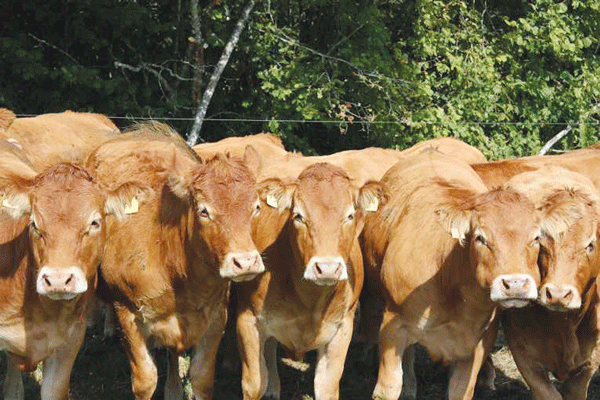
BY REX MPHISA
GOVERNMENT has presented farmers in foot-and-mouth-prone zones an opportunity to trade their livestock and meat products nationally once they prove that they have disease-free livestock through a new individual biosecurity scheme involving strict husbandry of domestic animals.
The latest development could also unlock international markets, while at the same time, instilling a sense of self-to-collective discipline towards animal movement control that has seen the rampant spread of animal diseases.
Hundreds of both communal and commercial farmers in affected areas, whose trade had been curtailed by blanket zoning of areas deemed afflicted by diseases, stand to benefit.
Veterinary services national director Josphat Nyika on Saturday confirmed the adoption of an international concept called “disease-free compartments”, but hastened to say the exercise would not come cheap and would be made easier if market-driven.
Beneficiary farmers would require external support from targeted markets, he said, adding that the fundamental aspect would be to confine animals.
“The very first starting point is fencing. Farmers interested in this new development must confine their livestock. We are ready to inspect these fences and then we work with the farmers closely because this is serious business.
“Animal feed for the confined livestock must be clean. We are talking about biosecurity and strict control measures to be adhered to. Numerous tests are involved and even the slaughter area has to be passed and certified clean,” Nyika said.
- Chamisa under fire over US$120K donation
- Mavhunga puts DeMbare into Chibuku quarterfinals
- Pension funds bet on Cabora Bassa oilfields
- Councils defy govt fire tender directive
Keep Reading
“This means an abattoir might have to be within that confined area, where the animals are kept, otherwise any other abattoir used will have to be certified clean by required standards.
“That is why I say it has to be market-driven and once someone has a market, they can team up with their client to have all these requirements in place. It does not come cheap. I will stress that fences are the key point.”
Nyika said his department will be actively involved in the creation of disease-free compartments while advising farmers to liaise with veterinary doctors in their respective districts for details on the programme.
“It’s starting this year with farmers who have capacity. Modalities are still being crafted, so we need those interested so that as soon as everything is in place we can start working with them,” he said.
Zimbabwe in 2000 lost a multi-million dollar beef supply quota to the European Union following the chaotic land reform programme, but could move towards that market with a successful implementation of the new concept.
The concept requires strong farmers’ associations and individual discipline and a strong monitoring team from government.
Farmers with the capacity are those who can fund clinical tests of their livestock, whose movement they will restrict once proven clean, creating the disease-free compartment.
A large number of districts in Zimbabwe are classified as red zone areas, where foot-and-mouth disease has been reported and government’s ban in those areas has been re-enforced by Statutory Instrument (SI) 250/2018.
Areas prescribed to be red zones through that SI are Mupfure in Shamva, Rushinga, Chao Resettlement in Mazowe, Matepatepa, Mt Darwin (excluding Chiswiti and Mukumbura), Centenary (excluding Mukumbura), Uzumba, Maramba, Pfungwe and Mudzi.
Other areas also declared FMD zones are Midlands province, excluding Gokwe North and South and Gweru, Masvingo Province, Ndowoyo in Chipinge, Makoni district and Cashel Valley.
Sections of Masvingo and a greater part of southern Zimbabwe are also affected by the ban which has seen farmers being locked down in their respective districts and failing to trade with outlying districts.
Already, farmers in Beitbridge district, also under the red zone, have been preparing for the new development as evidenced by their discussion of their social media group for livestock farmers.
“This is a good opportunity guys and a drastic move from the blanket stigma of having all the district animals being labelled FMD carriers without any proof. Let’s work with our veterinary officers to attain clean status,” resettled farmer Herbert Zhou said.
Ntandoyenkosi Ndlovu, who is also a member of a vibrant 63-member farmers group, said the new development was long overdue and made great news.
“This is exactly what farmers are asking for, not the zonal marking which traps farmers offside all the time,” Ndlovu said.
An independent veterinary doctor told Southern Eye that although the new method would be difficult to enforce, especially in areas affected by drought, where animal movement is hardly by choice, if successful, Zimbabwe could soon earn millions of foreign currency from beef trade.
“It will be easier if farmers are able to then confine their cattle once certified disease-free, but you will find movement will be influenced by search for pastures,” the veterinary doctor said.
While it requires millions of dollars to erect animal movement control fences, some destroyed by vandals during the fast-track land reform programme, the country could take advantage of farmers’ individual efforts and partner them.











